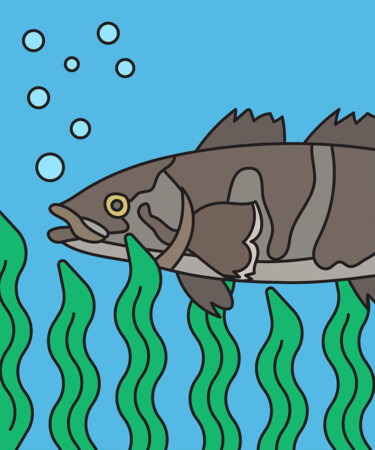This article is part of our Cocktail Chatter series, where we dive into the wild, weird, and wondrous corners of history to share over a cocktail and impress your friends.
A good name can easily make or break a product’s success — especially when it comes to food. There’s a reason we don’t refer to ketchup as “sweetened tomato reduction,” as accurate as that may be, and even the Earth’s flora and fauna can end up labeled with more appetizing titles. Here, we’re diving deep into perhaps the greatest rebrand in seafood history: the Chilean sea bass.
Plenty of Fish
During the height of the Tierra del Fuego Gold Rush in 1898, Swedish zoologist Fredrik Adam Smitt was doing research on the southern tip of Chile when he encountered the bacalao de profundidad, or “cod of the deep.” Smitt became the first zoologist to formally describe the massive deep-sea dweller, dubbing it the Patagonian toothfish. Allegedly, the fish was not a popular commodity at the time, and was generally considered a throwaway catch by local fishermen. This remained the case for roughly 80 years until American seafood merchant Lee Lantz got a taste.
While on an ambitious journey to find a new species of fish to market back in the States, Lantz found himself in a Chilean port town in the 1970s trying Patagonian toothfish for the first time. It had white, buttery flesh, was hard to overcook, and had a mild enough flavor to be suitable for myriad cuisines. Lantz’s search was over.
Still, there was a problem: The fish’s name was a mouthful, and it didn’t scream “delicious.” After considering a few alternative monikers, Lantz settled on Chilean sea bass in 1977, despite the fish not belonging to the sea bass family. But the name was much slicker, and the rebrand proved both wildly successful and problematic.
A White-Hot Commodity
Soon, fine-dining restaurants around the globe were featuring Chilean sea bass on their menus. Prices and demand shot through the roof, and by the mid-’90s, Patagonian toothfish landings (total catch weight) had multiplied by over 30 times. In 1994, the U.S. Food and Drug Administration (FDA) finally accepted Chilean sea bass as an alternative market name for Patagonian toothfish.
The bad news: There simply wasn’t enough to go around. Given the frigid waters that they inhabit, Chilean sea bass are slow to mature and reproduce. On top of that, illegal fishing operations began swarming the sea to cash in on the booming new market. Within the fishing industry, this era is now remembered as the White Gold Rush.
Return of the Bass
Word eventually got out that the sea bass craze was disrupting the aquatic ecosystem, and both retailers and restaurants started boycotting the fish. In 1997, international nonprofit Marine Stewardship Council (MSC) launched with the mission to “end overfishing and ensure seafood is fished sustainably.” The Coalition of Legal Toothfish Operators (COLTO) formed shortly thereafter in 2003 to take down illegal fisheries and support sustainable ones. The Chilean sea bass population returned to equilibrium by the mid-to-late aughts. Retailers rejoiced, and bass hit menus once again. Some illegally caught Chilean sea bass still makes it to market, but many seafood distributors only offer catches from MSC-approved fisheries.
Though most of us now know the fish as Chilean sea bass, there are still some communities that have held on to the original name. The people of South Georgia and the South Sandwich Islands even host an annual Toothfish Day in early September. Either way, we’re calling it delicious.
*Image retrieved from Тимур Конев via stock.adobe.com
